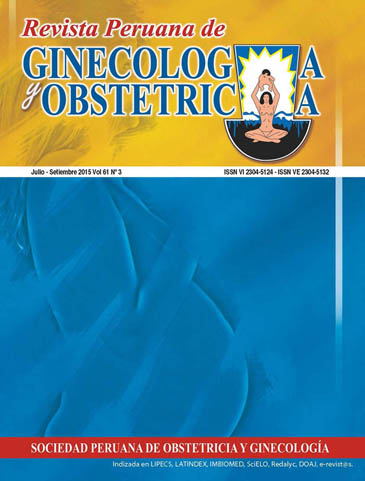Placenta angio-architecture and origin of monochorial pathology
DOI:
https://doi.org/10.31403/rpgo.v61i1853Abstract
Chorio-angiopagus twins (fetuses sharing one placenta) may exclusively show asymmetry in the distribution of placental territories with high incidence of marginal insertion and sometimes velamentous placenta as well as twin-twin transfusion (acute or chronic) produced by vessel communications (placental anastomosis). A series of fetal phenotypes may result including twin-to-twin transfusion syndrome, selective intrauterine growth restriction, anemia-polycythemia syndrome, and twin reversed arterial perfusion – TRAP- sequence; they may coexist. It is therefore important to study placental angioarchitecture in monochorionic twins in order to understand resulting both outcome and phenotype.Downloads
Download data is not yet available.
Downloads
Published
2015-11-12
How to Cite
Lacunza Paredes, R. O., & Ávalos Gómez, J. (2015). Placenta angio-architecture and origin of monochorial pathology. The Peruvian Journal of Gynecology and Obstetrics, 61(3), 255–261. https://doi.org/10.31403/rpgo.v61i1853
Issue
Section
Simposio
















